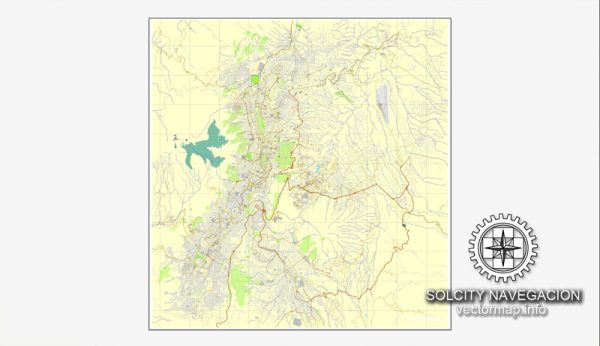Quito, the capital city of Ecuador, has a rich history of urban development that spans several centuries. Here’s a brief overview:
Pre-Columbian Era:
- Quito’s history dates back to pre-Columbian times when it was inhabited by indigenous peoples such as the Quitu and the Caras.
- The Quitu tribe settled in the area around 2000 BCE, and the Caras later established the Kingdom of Quito in the 9th century.
Inca Period:
- In the 15th century, the Inca Empire, led by Huayna Capac, conquered the Kingdom of Quito, incorporating it into their vast territory.
- The Incas significantly influenced the architecture and layout of the city, constructing roads, plazas, and temples. The most famous Inca site in Quito is the Temple of the Sun, now part of the city’s historic center.
Spanish Colonial Period:
- Spanish conquistadors, led by Sebastián de Belalcázar, arrived in Quito in 1534, marking the beginning of the Spanish colonial period.
- The Spanish transformed the city, introducing European-style architecture, churches, and institutions. The historic center of Quito, with its colonial buildings and narrow streets, reflects this period.
- The city became an important administrative and religious center within the Spanish colonial empire.
Independence and Republican Era:
- Quito played a crucial role in the fight for independence from Spanish rule in the early 19th century. The city became part of the Republic of Gran Colombia after gaining independence in 1822.
- Throughout the 19th and early 20th centuries, Quito experienced growth and modernization, with the construction of new buildings, roads, and bridges.
- The city’s urban development continued in the 20th century, marked by both historical preservation efforts and modern infrastructure projects.
Contemporary Period:
- In the late 20th century and early 21st century, Quito faced challenges related to rapid population growth and urbanization.
- Efforts have been made to preserve the historic center of Quito, which was declared a UNESCO World Heritage Site in 1978. This designation has helped protect the city’s colonial architecture and cultural heritage.
- Modern urban development projects, including improved transportation systems, public spaces, and infrastructure, have aimed to balance the preservation of historical elements with the needs of a growing and dynamic city.
Today, Quito stands as a vibrant and diverse city, blending its indigenous, colonial, and modern influences. The historic center, surrounded by the dramatic Andean landscape, continues to attract visitors from around the world.


 Author: Kirill Shrayber, Ph.D.
Author: Kirill Shrayber, Ph.D.